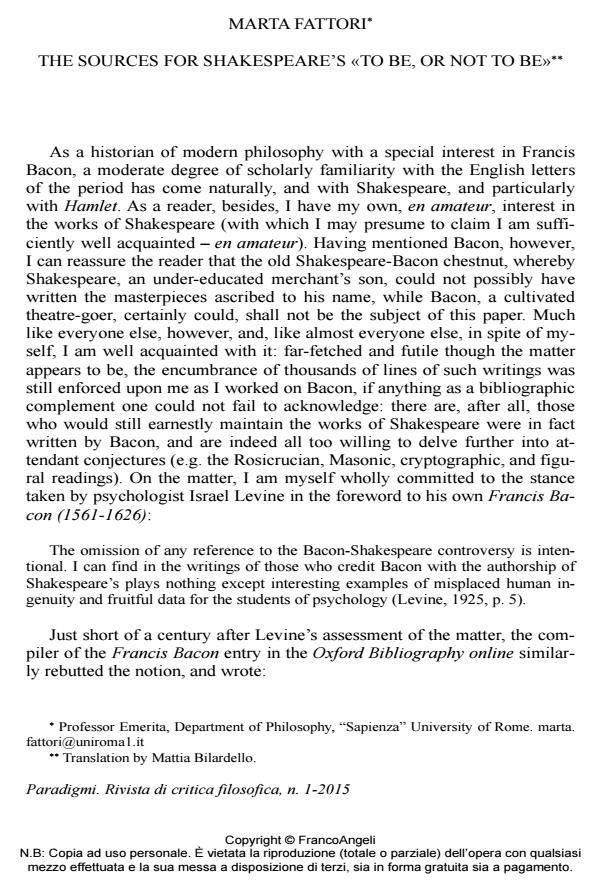The Sources for Shakespeare’s «To Be, or Not to Be»
Journal title PARADIGMI
Author/s Marta Fattori
Publishing Year 2015 Issue 2015/1
Language Italian Pages 18 P. 75-92 File size 136 KB
DOI 10.3280/PARA2015-001006
DOI is like a bar code for intellectual property: to have more infomation
click here
Below, you can see the article first page
If you want to buy this article in PDF format, you can do it, following the instructions to buy download credits

FrancoAngeli is member of Publishers International Linking Association, Inc (PILA), a not-for-profit association which run the CrossRef service enabling links to and from online scholarly content.
The famous incipit of Hamlet’s monologue (III.1.57) is the only occurrence of the syntagm "to be or not to be" in all the works of William Shakespeare. Regardless of the meanings given by Shakespeare himself, the hypothesis is that the syntagm could be linked to the importance and knowledge of the English translation of the Aristotelian syntagm "einai-me einai", which was in fact translated as "to be or not to be". Although in Aristotle there is not the existential value of Hamlet’s «To be, or not to be», there is no doubt that in the English culture of the Renaissance, and in particular the origin and construction of the so-called metaphysical poetry, Aristotle was a very well-known author. Finally, the syntagm appears in Dr. Faustus by Christopher Marlowe in an interesting and complex verse.
Keywords: Aristotle, Christopher Marlowe, Metaphysical Poetry, Philip Sidney, Shakespeare’s sources, "To Be or Not to Be".
Marta Fattori, The sources for Shakespeare’s «to be, or not to be» in "PARADIGMI" 1/2015, pp 75-92, DOI: 10.3280/PARA2015-001006